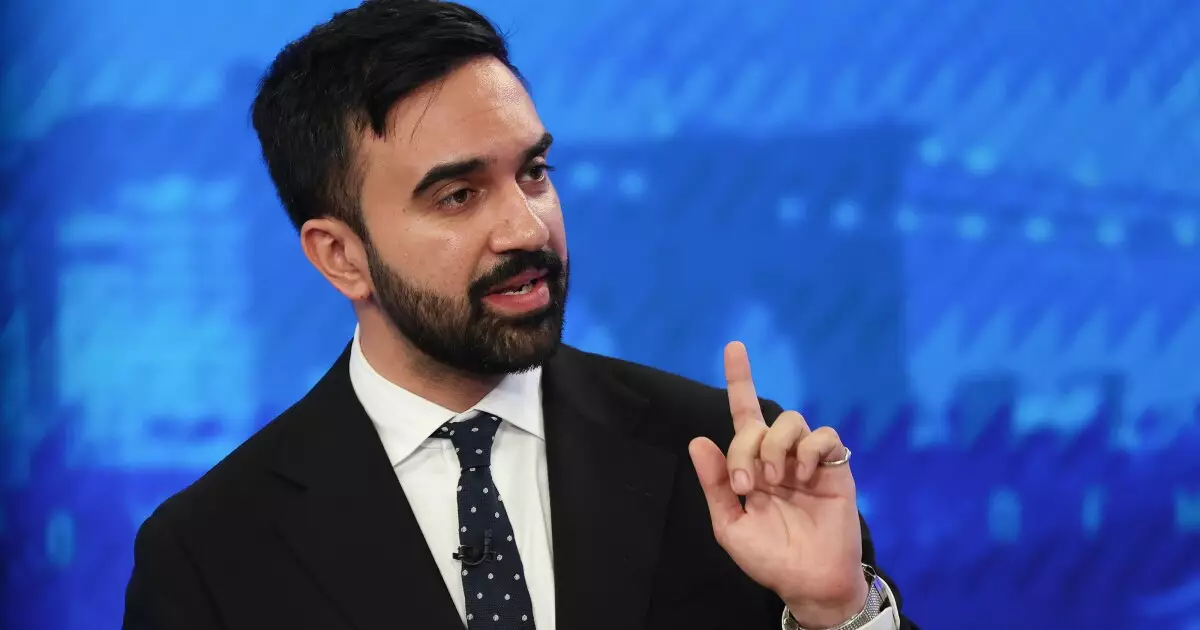Zohran Mamdani, a self-identified democratic socialist and rising politician in New York, has seized the spotlight with a staggering proposal to eliminate the city’s affordable housing crisis. Running second in the Democratic mayoral primary, his vision involves an audacious plan to inject an additional $70 billion into the city’s housing sector over the next decade. While lofty ambitions in politics often make for great rhetoric, we must scrutinize whether this plan is merely a dream built on shaky ground or a thoughtful roadmap for genuine change.
Mamdani is not merely targeting a systemic overhaul; he wishes to bolster an existing capital plan that already earmarks $25 billion for affordable housing. Yet there remain critical concerns about whose shoulders this debt will rest upon and whether the necessary state approvals can be secured. New York’s stringent debt limits pose significant hurdles—obstacles that Mamdani may find challenging to navigate in a highly politicized environment. To entertain a plan of such scale without reallocation of existing funds raises questions: Is this truly a new solution, or just a debt-laden gamble with taxpayers’ money?
Debt Dilemmas in an Unforgiving Economy
With New York City sitting on approximately $104 billion in outstanding debt, the idea of piling on an additional $70 billion—especially in a high-interest-rate climate—needs careful examination. Municipal bond analyst Howard Cure succinctly pointed out how ambitious Mamdani’s proposal is. “It’s a big increase in their fixed costs,” he noted. The ramifications of such fiscal irresponsibility could reverberate throughout the city’s economy, creating a debt burden that long outlives the current administration.
Critics might argue that housing shortages deserve urgent solutions. However, what good is a plan that relies on borrowing when it lacks the assurance of revenue generation? Mamdani’s failure to clarify specifics on reallocating funds brings to light a fundamental flaw in his strategy—detailed financial planning is as crucial as the vision itself. Without a comprehensive proposal offering clarity on how such vast sums would be managed, it risks being perceived as reckless rather than revolutionary.
Ambitious Solutions or Overreach? The Housing Crisis Conundrum
Mamdani claims he wants to construct 200,000 new affordable, rent-stabilized homes while doubling capital spending to rehabilitate public housing units. Yet, the mere desire to “freeze rents” and “make buses free” smacks of idealism at a cost. These promises introduce the question: Where will the funding come from? The target demographic of earners above $1 million marks an ambitious tax plan, but additional state approval is needed. This precarious balancing act of increased burdens on businesses without proven fiscal frameworks leads to a severe risk of stifling economic growth.
Existing conversations around housing highlight how truly pressing these issues are. According to city surveys, rental vacancies are at an all-time low of 1.4%, majorly impacting lower-income New Yorkers. But in tinny echo chambers, large financial commitments without operational scrutiny have historically led cities into economic tailspins. It is one thing to fix a problem; it is another to do so in a way that does not deepen the crisis further.
The Perils of Federal Withdrawal and Local Miscalculation
This precarious moment is compounded further by the federal government’s plan to slash rental assistance programs by 40%—a Biden administration action that could disproportionately affect the individuals Mamdani aims to support. In a city where the middle class is already teetering on the edge, the loss of federal support heightens the stakes immeasurably.
A deeper policy evaluation reveals a troubling reality: as Mamdani dreams of a swift implementation of his plan, the logistics of actual governance are much more complicated. New York’s existing Transitional Finance Authority has a history of facilitating city developments, but without comprehensive fiscal oversight, expanded borrowing could precipitate long-term economic harm. There’s a reason why fiscal caution prevails in municipal policy debates, yet Mamdani’s ambitious approach seems to overlook the lessons of the past.
Moreover, larger structural changes initiated by Mayor Eric Adams—though well-intentioned—have done little to assuage the crisis. While Mamdani’s housing project aims to build a generation of new affordable units, top-heavy bureaucratic processes and long timelines create skepticism about the efficacy of these initiatives.
The reality is that the essence of Mamdani’s plan reflects a broader ideological struggle: can we afford to create a society where governmental intervention trumps self-sufficiency and tangible economic stability? Without a concerted strategy that factors in the complex intersection of financial prudence and the realities of human need, this plan stands on uncertain foundations, echoing more political bravado than practical governance.

